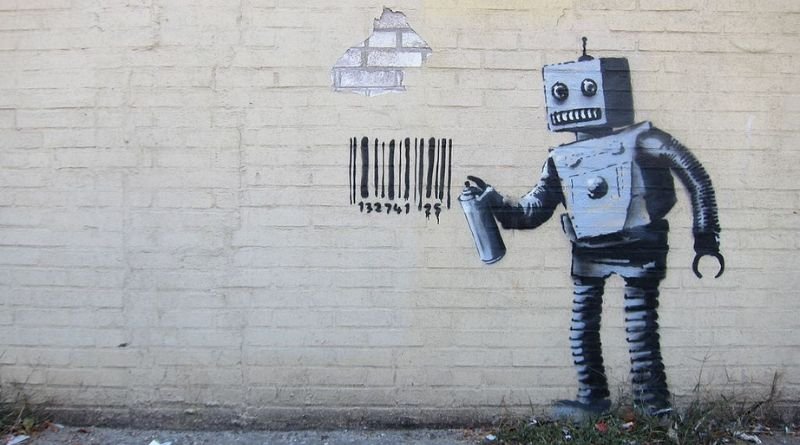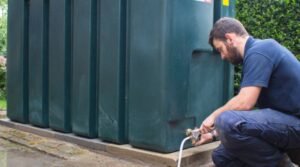Scrubbing the Streets: Effective Techniques for Washing Away Graffiti

Effective Techniques for Washing Away Graffiti
Graffiti, often seen as a form of street art, can range from simple written words to elaborate wall paintings. This form of expression has been around for centuries, with examples dating back to ancient civilizations. In the modern urban landscape, graffiti is a common sight in cities around the world. While some view it as an art form that adds character to the urban environment, others see it as vandalism that contributes to visual clutter and decay.
Urban Graffiti
The complexity of graffiti’s impact is multifaceted. It involves considerations of legality, aesthetics, community values, and property rights. Municipalities and property owners spend significant amounts of money and resources on graffiti removal, as it can affect property values and public perception. The debate over whether graffiti is art or vandalism is ongoing, but the need for effective removal techniques is universally recognized in instances where it is unwanted.
Efforts to manage and remove graffiti involve a variety of techniques, each suited to different types of surfaces and degrees of persistence. This article explores the most effective methods currently in use to clean up graffiti, discussing their applications, benefits, and limitations. By examining these methods, communities can better understand how to maintain clean and welcoming urban spaces.
The Impact of Graffiti on Communities
Graffiti’s impact on communities is profound and multifaceted, influencing perceptions of safety, property values, and community aesthetics. While some graffiti is recognized as vibrant street art that can enhance urban culture and attract tourists, unsolicited graffiti often has negative connotations. It can be perceived as a sign of neglect or disorder, potentially leading to decreased property values and reduced business revenue in affected areas.
Studies have shown that excessive graffiti can create a perception of blight and increase residents’ fears about their neighborhood’s safety. This perception is partly influenced by the “Broken Windows Theory,” which suggests that visible signs of disorder and neglect, such as vandalism, encourage further disorder and crime. As a result, municipalities and community groups are often motivated to quickly remove graffiti to maintain the area’s appearance and prevent the onset of further vandalism or criminal activities.
Moreover, the cost of graffiti removal can strain local government budgets. Cities like Dublin and Cork spend millions annually on cleanup efforts. These financial burdens necessitate the development of cost-effective, efficient methods for graffiti removal, which is crucial for maintaining urban infrastructure and community standards.
Graffiti also impacts community dynamics. It can serve as a medium for social and political expression, providing insights into community concerns or issues. In some cases, communities choose to embrace graffiti as part of their cultural identity, incorporating it into public art projects that engage local artists and youth.
Understanding the impact of graffiti is essential for developing effective management strategies that respect both the cultural significance of street art and the need for orderly public spaces. This dual approach can help balance artistic expression with community standards, contributing to the overall vitality and attractiveness of urban areas.
Chemical Solutions for Graffiti Removal
When addressing the removal of unwanted graffiti, chemical solutions are among the most common and effective tools. These solutions are designed to break down the paint at a molecular level, making it easier to wash away from a variety of surfaces without causing damage. The choice of chemical depends on the surface material and the type of paint used in the graffiti.
Types of Chemical Removers
Solvent-Based Removers: These are effective on smooth, non-porous surfaces like metal or glass. Solvents dissolve the paint, allowing it to be wiped or washed away. However, they can be harsh on the environment and may emit strong odors.
Bio-based Removers: Made from natural, non-toxic ingredients, bio-based removers are environmentally friendly options. They are less aggressive than solvents and are suitable for use near sensitive areas like schools and playgrounds.
Paint Strippers and Thinners: These are used for tougher jobs on more resistant layers of paint. They can be highly effective but might also pose risks to the underlying surface if not used correctly.
Application Techniques
The application of chemical graffiti removers typically involves several steps:
Testing: Always test the chemical on a small, inconspicuous area of the surface first to ensure it does not cause damage.
Application: Apply the chemical remover according to the manufacturer’s instructions, using brushes, rollers, or sprayers as needed.
Dwell Time: Allow the chemical to sit on the graffiti as directed, which could be anywhere from a few minutes to several hours.
Removal: After the dwell time, remove the graffiti with a high-pressure washer or scrubbing tools. Repeat the process if remnants of graffiti persist.
Neutralization: Some chemical removers require neutralization with water or another agent to prevent ongoing chemical reactions that could damage the surface.
Safety and Environmental Concerns
While chemical removers are effective, they come with responsibilities regarding safety and environmental impact. Proper protective gear such as gloves, goggles, and respirators should be used during application to protect against harmful fumes or splashes. Additionally, it’s crucial to consider the environmental impact of runoff, especially with solvent-based removers, and take steps to minimize any harmful effects by using eco-friendly products and containment strategies.
Understanding these aspects of chemical solutions aids in selecting the right product and method for safely and effectively removing graffiti, while also considering the well-being of the community and the environment.
Pressure Washing: A Go-To Method
Pressure washing is a widely used method for removing graffiti, particularly from large, durable surfaces such as brick, concrete, and stone. This technique utilizes high-pressure water, sometimes combined with detergents, to blast away paint without the need for harsh chemicals. It’s favored for its efficiency and effectiveness, but it requires specific knowledge to avoid damaging the underlying surfaces.
Advantages of Pressure Washing
Efficiency: Pressure washing can quickly cover large areas, making it ideal for extensive graffiti or when time is of the essence.
Environmentally Friendly: When used without chemicals, pressure washing is more environmentally benign compared to chemical methods. Even when detergents are used, they can often be eco-friendly options.
Versatility: Adjustable pressure settings allow for the cleaning of different types of surfaces without damage. Lower pressures can be used for softer surfaces like wood, while higher pressures can tackle harder surfaces like concrete.
Techniques and Best Practices
Successful pressure washing involves several key techniques:
Choosing the Right Pressure Washer: It’s essential to use a pressure washer with adjustable pressure settings. The correct pressure setting depends on the surface material; softer materials require lower pressures to prevent damage.
Using Appropriate Nozzles: Different nozzles can adjust the water stream for specific cleaning needs, from pinpoint high-pressure for stubborn paint to wider low-pressure sprays for rinsing.
Optimal Distance and Angle: The distance and angle of the spray to the surface can significantly impact effectiveness. Spraying too close may damage the surface, while too far reduces the cleaning power. An angle of about 45 degrees often works well to lift and wash away paint.
Challenges and Limitations
While pressure washing is effective, there are limitations to consider:
Water Consumption: Pressure washing can use a significant amount of water, which might be a concern in areas with water use restrictions or drought conditions.
Potential for Damage: Incorrect use can erode or damage some surfaces, particularly historical or decorative facades.
Limited Efficacy on Porous Surfaces: Deeply porous surfaces can absorb paint, making complete removal challenging without the aid of chemicals.
Integration with Other Methods
Often, pressure washing is used in conjunction with chemical methods, especially for tough cases or porous surfaces where paint has penetrated deeply. The chemicals help loosen the paint, and the pressure washer removes it, combining the strengths of both approaches.
Innovative Techniques in Graffiti Removal
As urban centers grow and the fight against graffiti continues, innovative techniques are being developed to improve the efficiency and effectiveness of graffiti removal. These advancements not only offer new ways to tackle stubborn paint but also aim to reduce environmental impact and preserve the integrity of the surfaces being cleaned.
Laser Cleaning Technology
One of the most cutting-edge solutions is laser cleaning technology. This method uses short pulses of laser light to target and vaporize paint without touching the underlying surface. It’s highly precise, making it ideal for delicate or historically significant surfaces where traditional methods might cause damage.
Benefits of Laser Cleaning:
Precision and Safety: Laser cleaning selectively removes the graffiti layer without abrasion, preserving the original material beneath.
No Chemicals Required: This method eliminates the need for harsh chemicals, making it environmentally friendly.
Minimal Waste: Laser cleaning produces minimal waste, as the only byproduct is the vaporized paint, which can be easily contained and collected.
Cryogenic Blasting
Another innovative approach is cryogenic blasting, also known as dry ice blasting. This technique uses pellets of dry ice propelled at high speeds to blast graffiti from surfaces. The dry ice sublimates upon contact, lifting the paint away through thermal shock.
Benefits of Cryogenic Blasting:
No Water or Chemicals: The process requires no water or chemicals, reducing runoff and environmental contamination.
No Abrasive Damage: The soft nature of dry ice means there is minimal risk of damaging the surface, unlike traditional sandblasting.
Efficiency: Cryogenic blasting is effective against multiple layers of paint, making it suitable for areas that have been repeatedly vandalized.
Electrochemical Paint Removal
Electrochemical paint removal is a method that uses an electrical current to remove paint from metal surfaces. This technique can be particularly useful for graffiti on trains, buses, and other metallic infrastructure.
Benefits of Electrochemical Paint Removal:
Targeted Removal: It focuses on removing paint without damaging the underlying metal.
Environmentally Safe: The method uses mild electrolytic solutions, which are less harmful than typical paint strippers.
Photocatalytic Coatings
Advancements in surface treatments, such as photocatalytic coatings, offer preventive measures against graffiti. These coatings use sunlight to catalyze a chemical reaction that breaks down organic compounds, including paint, making graffiti easier to wash off.
Benefits of Photocatalytic Coatings:
Self-Cleaning Properties: Surfaces treated with these coatings require less frequent cleaning, as they can continuously break down pollutants.
Long-Term Protection: These coatings can protect surfaces from a variety of environmental pollutants, not just paint.
These innovative techniques represent the forefront of graffiti removal technology. They reflect a shift towards more sustainable and surface-friendly methods, aligning with modern environmental standards and urban aesthetic values.



